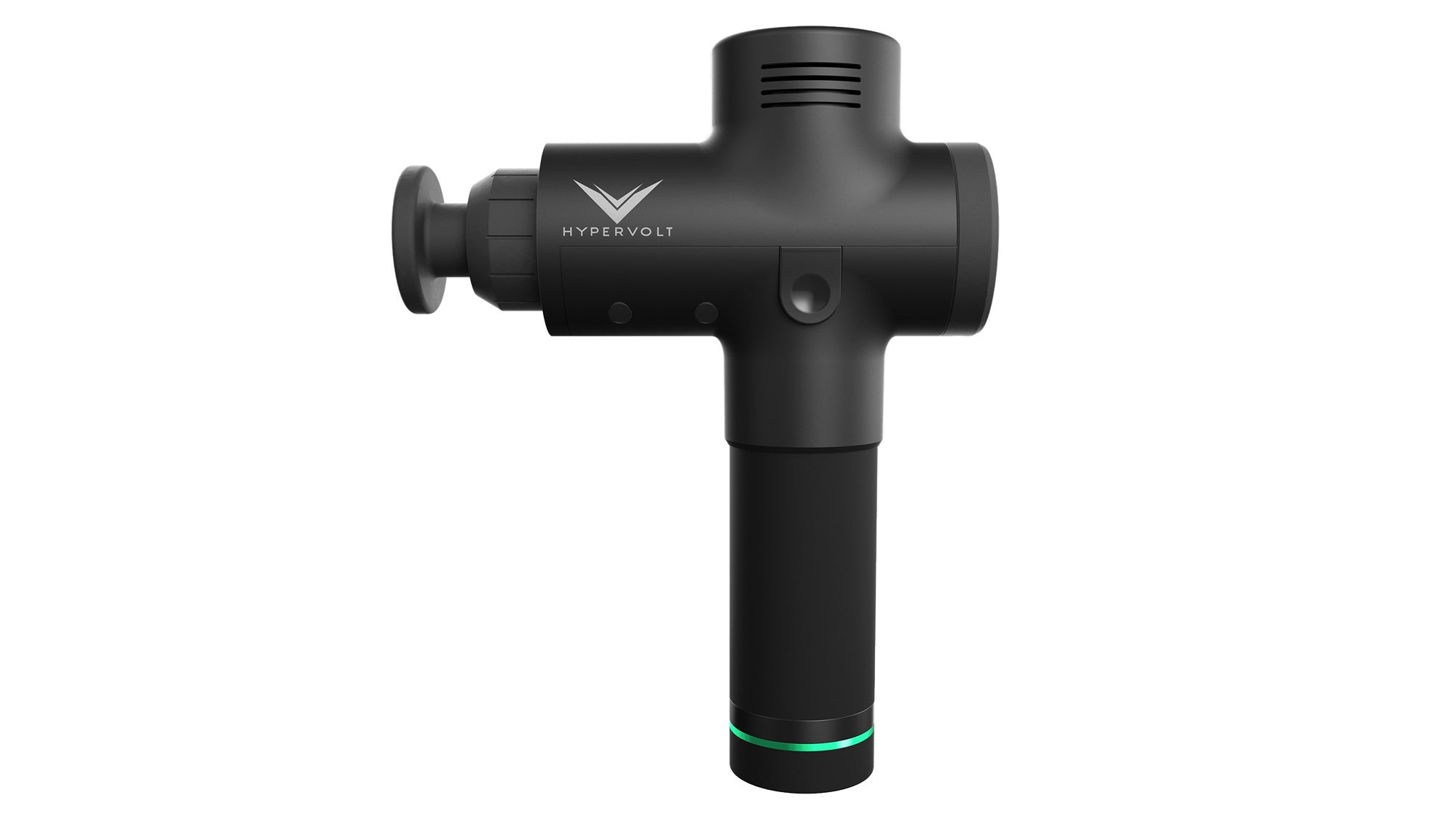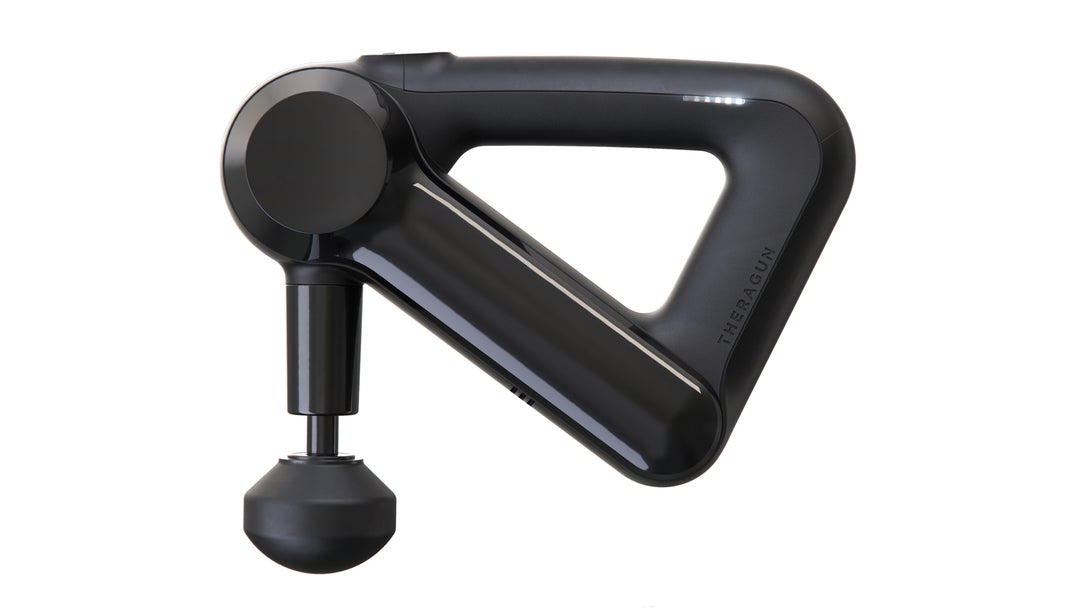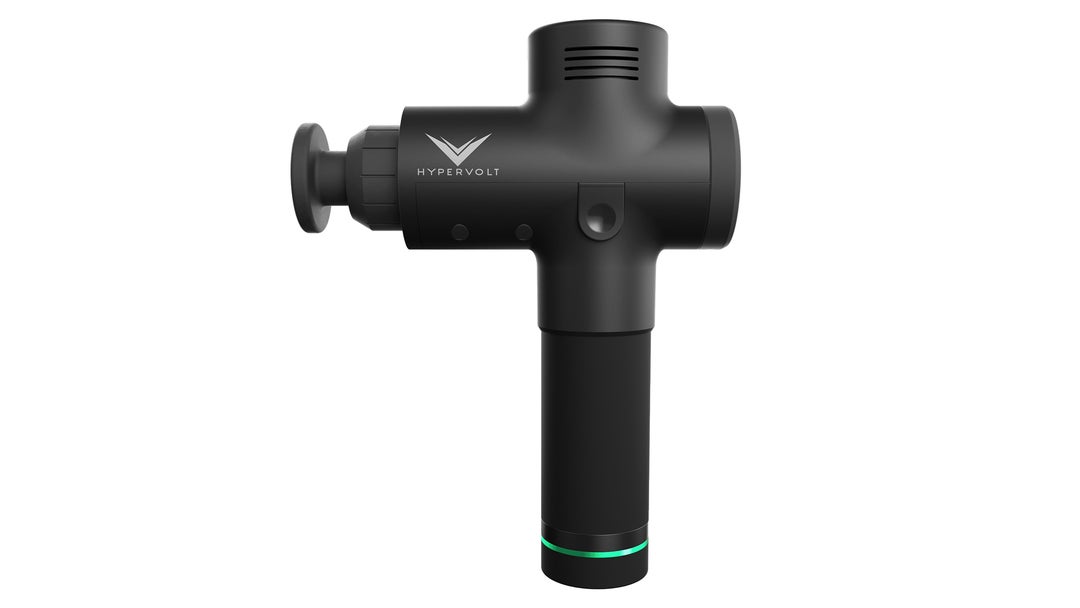If you buy through our links, we may earn an affiliate commission. This supports our mission to get more people active and outside.Learn about Outside Online's affiliate link policy
Theragun Or Hypervolt? We Compare Two Percussive Therapy Devices

Percussive therapy devices are mechanical massage tools used to aid in muscle recovery by stimulating blood flow and loosening tight tissues. While there were only a handful of options a few years ago, the marketplace is now exploding with everything from high-end offerings for physical therapists to do-it-yourself options hacked together with power tools. Below, we compare one of the OGs of percussive therapy—Theragun—and a more recent entrant into the game for a muscle beatdown beatdown.
Theragun G3
$400, Amazon.com

What
Theragun G3 improves upon its predecessor, the G2, by quieting the mechanism and offering two intensity settings while still providing effective deep tissue massage. Theragun’s unique and impressive 16mm head unit stroke length provides relief to tight musculature when in its high setting and pain relief over sensitive tissues while in the lighter setting. The G3 includes four head attachments and a travel case.
Pros of This Percussive Therapy Device
Multiple hand grip placements and a well-balanced unit makes use on various body parts easy and accessible with the G3. For those who prefer deep-tissue massage, the high setting will not disappoint. The included travel case is super helpful for travel or race-day schlepping.
Cons of This Percussive Therapy Device
Despite improvements in noise reduction over the prior Theragun, the G3 remains quite loud, particularly in
the high setting, and the unit is only capable of one hour of usage per charge. This isn’t too bad if you’re using it a few times a week, but for triathletes who abuse their bodies often, it can be tough to keep on top of.
Hyperice Hypervolt Plus
$450, Roadrunnersports.com

What
HyperVolt Plus boasts “crazy power” with a 30 percent increase in motor force over the existing HyperVolt. Its patented “QuietGlide Technology” provides quiet percussion therapy over three intensity settings while offering an impressive two hours of use per charge. The HyperVolt Plus includes five interchangeable head attachments as well.
Pros of This Percussive Therapy Device
Unlike other percussion devices where noise is a distraction, the HyperVolt Plus is pleasantly and surprisingly quiet while providing sufficient tissue massage. Unlike the G3, you can easily hold a conversation or watch TV while using the HyperVolt Plus, without having to increase volume or raise your voice. The interchangeable head units are well designed and offer impressive variability for multiple uses and body parts.
Cons of This Percussive Therapy Device
With only one hand hold position and the inability to change the head position, the HyperVolt+ can be difficult to use on hard to reach areas. Additionally, even in its highest setting, the HyperVolt+ does not feel as “intense” as Theragun’s G3.
Winner: HyperVolt Plus
Silence is golden! Both devices have a great design, but the HyperVolt’s quietness reigns supreme.